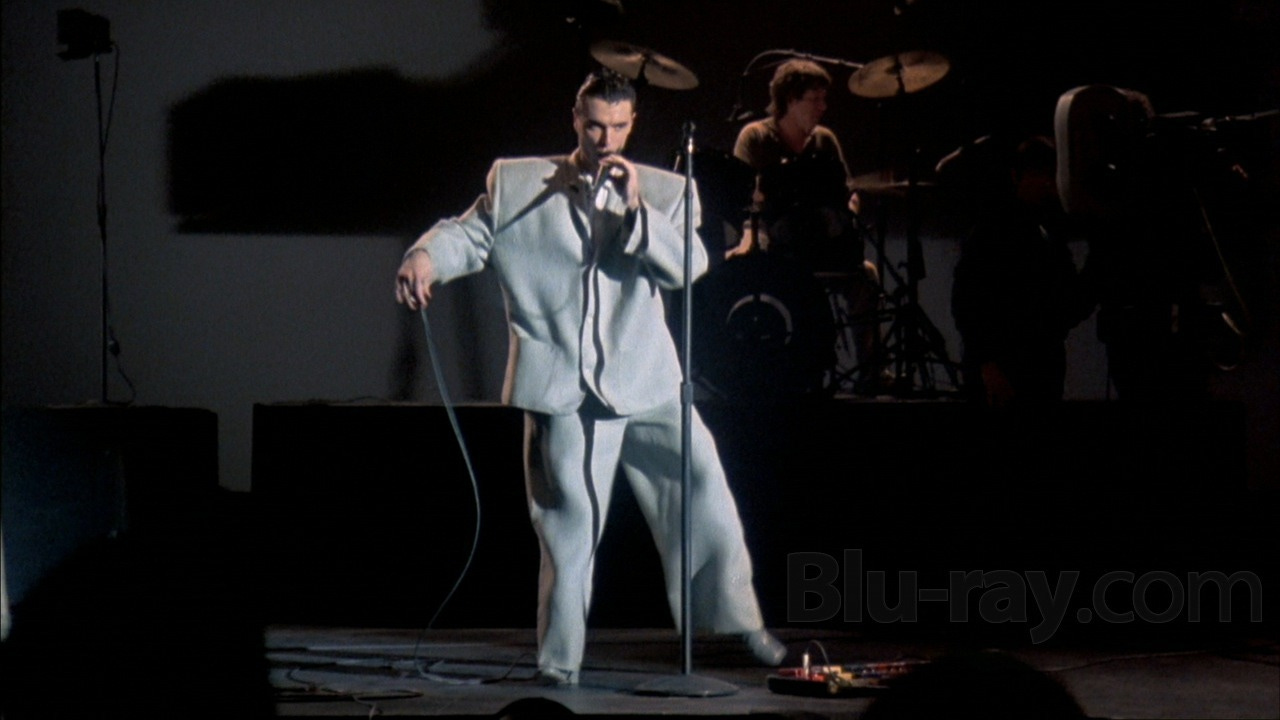(free) More Talking, More Head - Artist Spotlight
A Nervy Journey Through Rhythm, Wit, and One Big Suit
Listen here, or read on!
This Ain’t No Disco, This Ain’t No Synth Band
In What is New Wave? and New Wave vs Disco vs AOR ($) I discussed new wave’s special sauce of synths, quirky vocals and unique lyrics. While the Talking Heads eschewed synths, they defined the new wave style with the latter two. For one, Byrne’s vocals are flight rather than fight. Guitarist Tina Weymouth, drummer Chris Frantz, and Jerry Harrison supplement this nervous energy in their melodies but also manage to sound inviting. As the songwriter, Byrne writes lyrics that are non-linear, surreal, and sometimes stream-of-consciousness.
They didn’t match the hitmaking power of the Cars or Blondie, but earned consistent Gold albums in their native U.S. and did even better in the UK, where experimental sounds found a warmer reception. And the Talking Heads were critical darlings of the new wave vanguard. In my History of Rock Music university class in the late ‘90s, the professor was a flower child–turned–academic who thus leaned heavily on the ‘60s. His only new wave entry was the Talking Heads.
Art School Anthems and Psycho Killers
The members of the Talking Heads moved to New York City in the mid-70s to make it big. They stayed in dingy apartments, but were hungry like the ($) - sorry! CBGB in the then-seedy East Village was their proving ground, following the lead of Blondie and other new wave and punk bands.
The Talking Heads’ self-titled debut was not only excellent, but it, along with a handful of other albums, kickstarted new wave. While it has a healthy dose of repetition and jadedness, no one will mistake it for a punk album (apologies to the Clash’s debut a few months prior). Psycho Killer is one of the best new wave debut singles, featuring angular guitars, quirky vocals, and great emotional buildup. And while the Talking Heads would evolve in their 15 years, the blueprint was already laid out.
Their follow-up More Songs About Buildings and Food found the band quickly gaining name recognition. A highlight is a cover of the Al Green-written R&B hit Take Me to the River ($), which manages to keep the groove and soul of the original while not compromising Byrne’s vocal delivery. It also shows the start of the band’s growing emphasis on rhythm, thanks to Weymouth, Frantz, and producer Brian Eno (responsible for the avant-garde sound of early Roxy Music).
Polyrhythm Nation
The Talking Heads’ next album title Fear of Music is a perfect foreshadowing of the direction this album will take. The biggest change is the incorporation of African polyrhythms, highlighted with I Zimbra. My Rock Music professor called out this song for this very reason. At the same time though, Byrne lost the sense of humor in his lyrics and vocal delivery in I Zimbra and its album. And to the Talking Heads’ credit this avant-garde single still became a minor dance hit. In the future the Talking Heads would try other world rhythms.
The Talking Heads’ foray into polyrhythms culminates in Remain in Light. The verses of Once in a Lifetime are a great example of this. This and Byrne’s tense vocals are countered deftly with a straightforward melody and vocal in the choruses. While the song flopped as a single, it slowly turned into a new wave juggernaut. Producer Eno later described Byrne as “obsessively focused” on refining each track, which started to annoy Weymouth and Frantz.
The tour to support Remain in Light was a turning point toward elaborate shows to supplement the muscular, energetic musical performances. Indeed, to make their shows as layered as this album, other musicians joined the Talking Heads quartet (including guitar virtuoso Adrian Belew and Bernie Worrell).
The early ‘80s saw the Talking Heads taking an unannounced hiatus to try new things. Weymouth and Frantz (perhaps as a response to Byrne’s iron fist) formed and applied their newly-acquired world rhythms to the Tom Tom Club. Genius of Love was a hit (critics and Mariah Carey also loved it). David Byrne tried his hand at producing, applying the polyrhythms and clipped vocal delivery to the B-52’s Mesopotamia single and EP.
Big Suits, Bigger Hooks
After the 3-year hiatus, Talking Heads comes out with Speaking in Tongues, showcasing their new sound. For one, Byrne maintains his surreal lyrics, but once again folds in his sense of humor. An excellent example of this is Burning Down the House, their first US top 10 hit. During the supporting tour, director Jonathan Demme filmed them, and released Stop Making Sense. It is the best tour film in new wave, and one of the most important in rock music. Sure, they sound great live, but what elevates it to Jedi status is the detailed stage show engineered by Byrne. Let’s not forget his large grey suit!
With the follow-up albums Little Creatures and True Stories, the Talking Heads were all in on making mainstream new wave songs. For example, the singles And She Was and Wild Wild Life totally blend in with other mid-80s new wave hits. Still, these are sharp, catchy tracks. Road to Nowhere, my wife’s favorite, even nods to their earlier spirit. But the cracks were starting to show: by this point, Byrne’s growing dominance in the studio strained the collaborative spirit that once defined the band’s sound.
Nothing But Flowers (and Lawsuits)
Naked is the Talking Heads last full studio album. Album sales held up strong despite a return to world rhythms. Mr. Jones is a great expansion of their sound into the Latin realm. A highlight of Naked is the lead single, the reverse-urbanization tale of Nothing But Flowers that delivers a strong message while Byrne still delivers his early sense of humor.
After Naked, the Talking Heads were quiet for a few years. After making several new tracks for their greatest hits album, Byrne grew tired of the Talking Heads and disbanded them. Reportedly, he was matter-of-fact in delivering the news, which irked the rest of the band. Years later, Byrne felt remorse about that. Several years later they reformed Talking Heads sans Byrne, but he sued to stop that. In response, they continued as the Heads.
Still Speaking in Tongues
The Talking Heads legacy is undeniable. Sure, later new wave bands like the B-52s and Oingo Boingo carried on with the jittery vocals, quirky melodies and start-stop dynamics, and extended the surreal aspect of the lyrics. But notable bands in every following decade tie back to Talking Heads. For example, Beck and No Doubt in the 1990’s. New Wave revivalists in the 2000s feasted on the Talking Heads material (like Franz Ferdinand and the Killers). But even after that, the Talking Heads inspired bands like the Lumineers and Walk the Moon, drawing on their serious and playful sides respectively. Enjoy our curated playlist of essential Talking Heads tracks!
Into band deep-dives? Our premium Duran Duran series unpacks their first three albums, one hook, lyric, and look at a time. Jump into the series.






